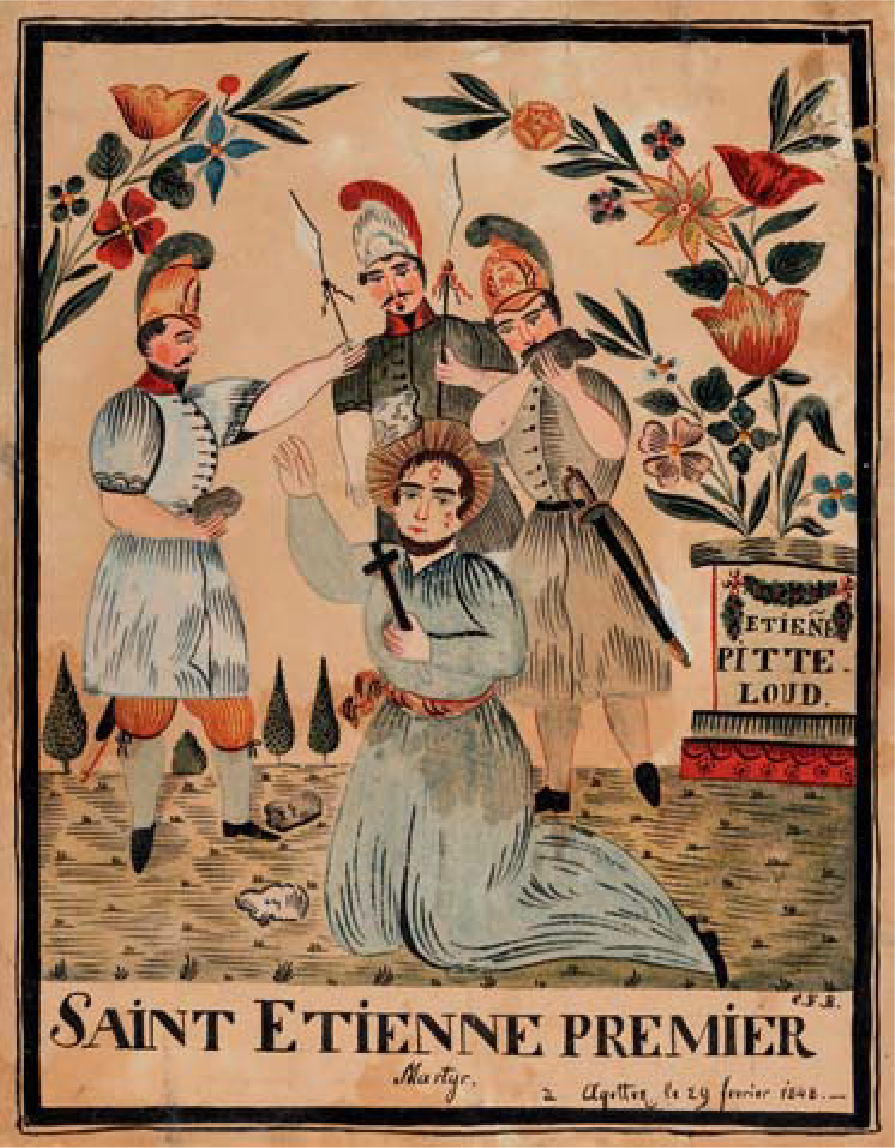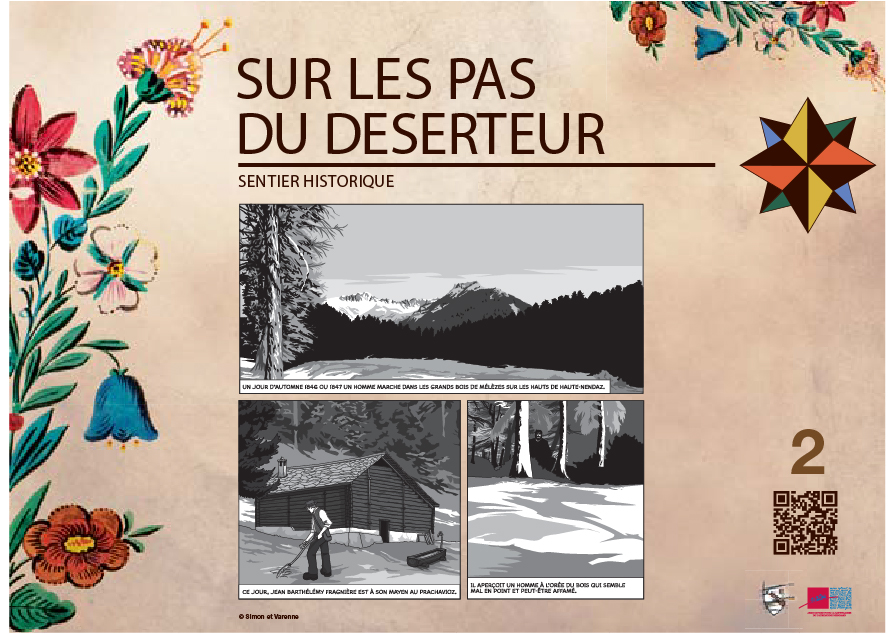“Jean-Barthelémy Fragnière, head of the municipality of Nendaz, was a peaceable bon-vivant type. His first thought was to bring the stranger to his home. The stranger declined: he would, said he, be more comfortable among the hay in the barn.”
JEAN GIONO
Le Déserteur © Gallimard
![]() The actual beginnings of our illustrator are in early 1848 in the central Valais region on the left bank of the River Rhône, between Nendaz and Hérémence. He arrived at Prachavioz, in the heights of Nendaz in the area of the mayens (mountain huts) – specifically in the mayen of Jean-Barthélemy Fragnière. That person is important in the community as he was its head in 1859, almost a decade after the arrival of the Deserter. Cattle could shelter in a stable-barn in these medium-altitude pastures, and today there is a cross at Prachavioz to mark the time he spent at Nendaz.
The actual beginnings of our illustrator are in early 1848 in the central Valais region on the left bank of the River Rhône, between Nendaz and Hérémence. He arrived at Prachavioz, in the heights of Nendaz in the area of the mayens (mountain huts) – specifically in the mayen of Jean-Barthélemy Fragnière. That person is important in the community as he was its head in 1859, almost a decade after the arrival of the Deserter. Cattle could shelter in a stable-barn in these medium-altitude pastures, and today there is a cross at Prachavioz to mark the time he spent at Nendaz.
![]() The first known work by Charles-Frédéric Brun in central Le Valais, a Saint Etienne. Just like the popular printed pictures from which he took his inspiration, most images from The Deserter are surrounded by a black box with a fine line and a bold line.
The first known work by Charles-Frédéric Brun in central Le Valais, a Saint Etienne. Just like the popular printed pictures from which he took his inspiration, most images from The Deserter are surrounded by a black box with a fine line and a bold line.
PATOIS
Dejèrtö ét arouà p’a dzorèta dû Prachâvio.
The Deserter arrived via the small woodland of the mayen of Prâchâvioz.
![]() What was the reason for the Deserter settling in central Valais?
What was the reason for the Deserter settling in central Valais?

ETIENNE PITTELOUD.
SAINT ETIENNE PREMIER, Martyr. à Agettez,
le 29 février 1848. C.F.B.
26 x 21 cm. © Robert Hofer, Sion
PATOIS
Dejèrtö ét arouà p’a dzorèta dû Prachâvio.
The Deserter arrived via the small woodland of the mayen of Prâchâvioz.
![]() What was the reason for the Deserter settling in central Valais?
What was the reason for the Deserter settling in central Valais?

If someone you didn’t know suddenly appeared in the woods right in front of you, what would you do?


